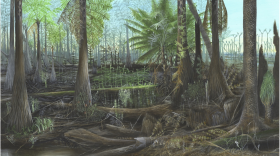-
Host Dave Schlom visits with Isabel Montañez, Distinguished Professor in the Department of Earth and Planetary Sciences at UC Davis.
-
Host Dave Schlom is joined by two scientists from the UC Davis Tahoe Environmental Research Center (TERC) to discuss the state of one of the crown jewels of the Sierra, Lake Tahoe.
-
Expert explains why bird flu has spread rapidly in the state. Also, PG&E is hoping to raise its rates again, and the City of Marysville has reached an agreement with the owners of a major league development team to make Bryant Park its new home.
-
Host Dave Schlom visits with UC Davis Department of Earth and Planetary Sciences geophysics professor Magali Billen to talk about one of Earth's most dynamic and complex processes, subduction.
-
Host Dave Schlom is joined by two scientists from the UC Davis Tahoe Environmental Research Center (TERC) to discuss the state of one of the crown jewels of the Sierra, Lake Tahoe.
-
Host Dave Schlom visits with UC Davis Department of Earth and Planetary Sciences geophysics professor Magali Billen to talk about one of Earth's most dynamic and complex processes, subduction.
-
A new study from UC Davis found that the amount of time wildfire smoke lingers and the space it covers has increased dramatically since 2006. That can cool lake temperatures and impact how ecosystems function.
-
An art exhibit put on by two UC Davis professors shows the future isn’t predetermined when it comes to wildfire.
-
The city of Chico says those camping at Comanche Creek Greenway will need to go to a designated legal shelter option. Also, Butte County’s district attorney discusses the court hearing surrounding a teenager charged with killing an unhoused person at Teichert Ponds last September, and smoke from wildfires is one reason Lake Tahoe is getting murkier.
-
California announces water allocation cutbacks for State Water Project contractors. Also, the Plumas County sheriff is exploring video security options following the Dixie Fire, and Gov. Gavin Newsom proposes funding to tribes for environmental initiatives.

Play Live Radio
Next Up:
0:00
0:00
Available On Air Stations








